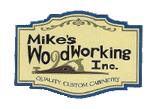How Do I Clean Acrylic Finish Cabinetry?
Regular Care and Handling
• Leave protective film in place until the project is complete
• Do not store panels outside
• Do not store or transport panels in direct sunlight
• Avoid sliding the panels on the outer surface
• An Acrylic Polishing Kit is recommended
The high gloss surface on our acrylic doors becomes more scratch resistant over the first few days after the protective film has been removed. This process can be accelerated by lightly polishing the surface immediately after the protective film is removed using Ultra-Gloss Superpolish + DGS, Novus 1 Polish, or Plexus Plastic Cleaner with a clean micro-fiber cloth.

